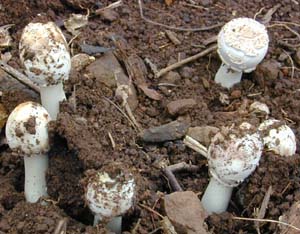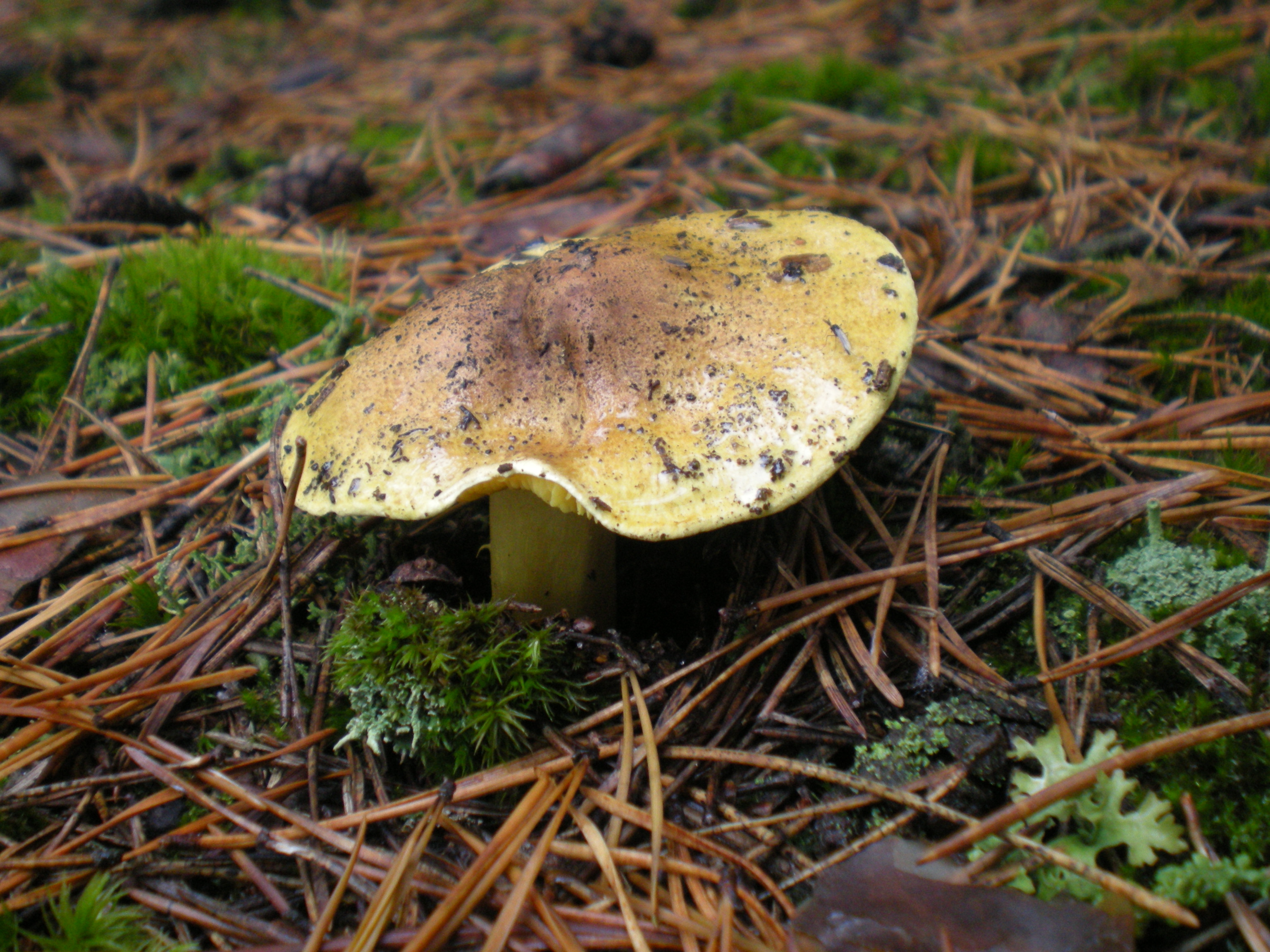|
Tricholoma Inamoenum
''Tricholoma inamoenum'' is a mushroom of the agaric genus ''Tricholoma'' found through the Northern Hemisphere, particularly under conifers. It is poisonous, and is characterized by an unpleasant odor resembling coal gas or tar. Seattle's ''Tricholoma platyphyllum'' may be the same species. A similar species is ''Tricholoma sulphureum ''Tricholoma sulphureum'', also known as sulphur knight or gas agaric, is an inedible or mildly poisonous mushroom found in woodlands in Europe. It has a distinctive bright yellow colour and an unusual smell likened to coal gas. It occurs in dec ...'', which is found under both conifers and hardwoods. See also * List of North American ''Tricholoma'' * List of ''Tricholoma'' species References inamoenum Fungi described in 1815 Fungi of North America Inedible fungi Taxa named by Elias Magnus Fries {{Tricholomataceae-stub ... [...More Info...] [...Related Items...] OR: [Wikipedia] [Google] [Baidu] |
Elias Magnus Fries
Elias Magnus Fries (15 August 1794 – 8 February 1878) was a Swedish mycologist and botanist. Career Fries was born at Femsjö ( Hylte Municipality), Småland, the son of the pastor there. He attended school in Växjö. He acquired an extensive knowledge of flowering plants from his father. In 1811 Fries entered Lund University where he obtained a doctorate in 1814. In the same year he was appointed an associate professorship in botany. He was elected a member of the Royal Swedish Academy of Sciences, and in 1824, became a full professor. In 1834 he became Borgström professor (Swed. ''Borgströmianska professuren'', a chair endowed by Erik Eriksson Borgström, 1708–1770) in applied economics at Uppsala University. The position was changed to "professor of botany and applied economics" in 1851. He was elected a Foreign Honorary Member of the American Academy of Arts and Sciences in 1849. That year he was also appointed director of the Uppsala University Botani ... [...More Info...] [...Related Items...] OR: [Wikipedia] [Google] [Baidu] |
Claude Casimir Gillet
Claude Casimir Gillet (19 May 1806 in Dormans, department of Marne – 1 September 1896 in Alençon), was a French botanist and mycologist. He initially trained as a medical doctor and veterinarian. As a veterinarian, he worked for four years in Africa. Around 1853 he developed a passion for mycology, subsequently publishing a number of works on the subject. In 1867 he became a corresponding member of the ''Société Linnéenne de Normandie''. Gillet was the taxonomic authority of the genera '' Tubaria'' (initially named a subgenus of '' Agaricus'' by Worthington George Smith) and '' Microglossum''. MycoBank. International Mycological Association He was honoured in 1899, when botanists P.A.Saccardo & P.Sydow published '' [...More Info...] [...Related Items...] OR: [Wikipedia] [Google] [Baidu] |
Mushroom
A mushroom or toadstool is the fleshy, spore-bearing fruiting body of a fungus, typically produced above ground, on soil, or on its food source. ''Toadstool'' generally denotes one poisonous to humans. The standard for the name "mushroom" is the cultivated white button mushroom, '' Agaricus bisporus''; hence the word "mushroom" is most often applied to those fungi ( Basidiomycota, Agaricomycetes) that have a stem ( stipe), a cap ( pileus), and gills (lamellae, sing. lamella) on the underside of the cap. "Mushroom" also describes a variety of other gilled fungi, with or without stems, therefore the term is used to describe the fleshy fruiting bodies of some Ascomycota. These gills produce microscopic spores that help the fungus spread across the ground or its occupant surface. Forms deviating from the standard morphology usually have more specific names, such as " bolete", " puffball", " stinkhorn", and "morel", and gilled mushrooms themselves are often called " agarics" in ... [...More Info...] [...Related Items...] OR: [Wikipedia] [Google] [Baidu] |
Agaric
An agaric () is a type of fungus fruiting body characterized by the presence of a pileus (cap) that is clearly differentiated from the stipe (stalk), with lamellae (gills) on the underside of the pileus. In the UK, agarics are called "mushrooms" or "toadstools". In North America they are typically called "gilled mushrooms". "Agaric" can also refer to a basidiomycete species characterized by an agaric-type fruiting body. Archaically, agaric meant 'tree-fungus' (after Latin ''agaricum''); however, that changed with the Linnaean interpretation in 1753 when Linnaeus used the generic name '' Agaricus'' for gilled mushrooms. Most species of agaricus belong to the order Agaricales in the subphylum Agaricomycotina. The exceptions, where agarics have evolved independently, feature largely in the orders Russulales, Boletales, Hymenochaetales, and several other groups of basidiomycetes. Old systems of classification placed all agarics in the Agaricales and some (mostly older) sour ... [...More Info...] [...Related Items...] OR: [Wikipedia] [Google] [Baidu] |
Tricholoma
''Tricholoma'' is a genus of fungus that contains many fairly fleshy white-spored gilled mushrooms which are found worldwide generally growing in woodlands. These are ectomycorrhizal fungi, existing in a symbiotic relationship with various species of coniferous or broad-leaved trees. The generic name derives from grc, τριχο-, tricho-, hair and grc, λῶμα, loma, fringe, border although only a few species (such as '' T. vaccinum'') have shaggy caps which fit this description. The most sought out species are the East Asian '' Tricholoma matsutake'', also known as ''matsutake'' or ''songi'', and the North American '' Tricholoma magnivelare'' species complex, also known as "ponderosa mushroom", "American matsutake", or " pine mushroom". Others are safe to eat, such as ''Tricholoma terreum'', but there are a few poisonous members, such as '' T. pardinum'', '' T. tigrinum'' and '' T. equestre''. Many species originally described within Tricholoma have since been moved to ... [...More Info...] [...Related Items...] OR: [Wikipedia] [Google] [Baidu] |
Mushroom Poisoning
Mushroom poisoning is poisoning resulting from the ingestion of mushrooms that contain toxic substances. Its symptoms can vary from slight gastrointestinal discomfort to death in about 10 days. Mushroom toxins are secondary metabolites produced by the fungus. Mushroom poisoning is usually the result of ingestion of wild mushrooms after misidentification of a toxic mushroom as an edible species. The most common reason for this misidentification is a close resemblance in terms of color and general morphology of the toxic mushrooms species with edible species. To prevent mushroom poisoning, mushroom gatherers familiarize themselves with the mushrooms they intend to collect, as well as with any similar-looking toxic species. The safety of eating wild mushrooms may depend on methods of preparation for cooking. Signs and symptoms Poisonous mushrooms contain a variety of different toxins that can differ markedly in toxicity. Symptoms of mushroom poisoning may vary from gastric u ... [...More Info...] [...Related Items...] OR: [Wikipedia] [Google] [Baidu] |
FalconGuide
Globe Pequot is a book publisher and distributor of outdoor recreation and leisure titles that publishes 500 new titles. Globe Pequot was acquired by Morris Communications Morris Communications, headquartered in Augusta, Georgia, is a privately held media company with diversified holdings that include magazine publishing, outdoor advertising, book publishing and distribution, visitor publications, and online serv ... in 1997. Lyons Press was acquired in 2001. It was sold to Rowman & Littlefield in 2014. Imprints Globe Pequot publishes several imprints, including '' Prometheus Books'' ''Lyons Press'', ''FalconGuides'', ''Knack'', and ''Insiders' Guide''. References External links *{{Official website, http://globepequot.com Companies based in New Haven County, Connecticut Morris Communications Publishing companies of the United States ... [...More Info...] [...Related Items...] OR: [Wikipedia] [Google] [Baidu] |
Tricholoma Sulphureum
''Tricholoma sulphureum'', also known as sulphur knight or gas agaric, is an inedible or mildly poisonous mushroom found in woodlands in Europe. It has a distinctive bright yellow colour and an unusual smell likened to coal gas. It occurs in deciduous woodlands in Europe from spring to autumn. Taxonomy ''Tricholoma sulphureum'' was first described in 1784 by the French botanist Pierre Bulliard and given the name ''Agaricus sulphureus'', before being placed in the genus ''Tricholoma'' by German mycologist Paul Kummer in 1871. The specific epithet ''sulfǔrěus'' derived from the Latin 'of or pertaining to sulfur'. It belongs to a complex of similar foul-smelling species such as the very similar '' Tricholoma inamoenum''. Another related species, ''T. bufonium'', may be an intraspecific variant. Description It has a convex cap with a vague umbo up to across, sulphur yellow in colour. The thick, sinuate gills, stipe and flesh are similarly bright yellow. The smell, caused by t ... [...More Info...] [...Related Items...] OR: [Wikipedia] [Google] [Baidu] |
List Of North American Tricholoma
This is a list of ''Tricholoma'' species found in North America. *'' Tricholoma acre'' *'' Tricholoma aestuans'' *''Tricholoma albidum'' *''Tricholoma apium'' - scented knight *'' Tricholoma argenteum'' *'' Tricholoma arvernense'' *'' Tricholoma atrodiscum'' *'' Tricholoma atrosquamosum'' - dark scaled knight *''Tricholoma atroviolaceum'' *'' Tricholoma aurantio-olivaceum'' *'' Tricholoma aurantium'' - orange knight *''Tricholoma caligatum'' *''Tricholoma cingulatum'' - girdled knight *''Tricholoma colossus'' - giant knight *'' Tricholoma davisiae'' *'' Tricholoma dryophilum'' *'' Tricholoma equestre'' - yellow knight *'' Tricholoma farinaceum'' *'' Tricholoma floridanum'' *''Tricholoma focale'' - booted knight *'' Tricholoma fracticum'' *'' Tricholoma fulvimarginatum'' *'' Tricholoma fulvum'' - birch knight *'' Tricholoma fumosoluteum'' *'' Tricholoma griseoviolaceum'' *'' Tricholoma hordum'' *'' Tricholoma huronense'' *'' Tricholoma imbricatum'' - matt knight *'' Tricholoma inamo ... [...More Info...] [...Related Items...] OR: [Wikipedia] [Google] [Baidu] |
List Of Tricholoma Species
This is a list of species in the agaric genus ''Tricholoma''. , Index Fungorum lists 379 species in the genus. __NOTOC__ A B C D E F G H I J K L M N O P Q R S T U V U W X Y Z A *'' Tricholoma abietinum'' Velen. 1920 – Europe *'' Tricholoma acerbum'' (Bull.) Quél. 1872 *'' Tricholoma acicularum'' Velen. 1947 *'' Tricholoma acutistramineum'' Corner 1994 – Singapore *'' Tricholoma aeruginascens'' Corner 1994 *'' Tricholoma aestivum'' Velen. 1920 – Europe *'' Tricholoma aestuans'' (Fr.) Gillet 1874 *'' Tricholoma albatum'' Velen. 1920 – Europe *'' Tricholoma albidulum'' N.Ayala, G.Moreno & Esteve-Rav. 1997 *''Tricholoma albidum'' Bon 1984 *'' Tricholoma albobrunneum'' (Pers.) P.Kumm. 1871 *'' Tricholoma alboconicum'' (J.E.Lange) Clémençon 1983 *'' Tricholoma alboluteum'' Velen. 1920 – Europe *'' Tricholoma albosquamulatum'' Beeli 1927 * '' Tricholoma album'' (Schaeff.) P.Kumm. 1871 *'' Tricholoma altaicum'' Singer 1943 *'' Tricholoma amp ... [...More Info...] [...Related Items...] OR: [Wikipedia] [Google] [Baidu] |
MycoBank
MycoBank is an online database, documenting new mycological names and combinations, eventually combined with descriptions and illustrations. It is run by the Westerdijk Fungal Biodiversity Institute in Utrecht. Each novelty, after being screened by nomenclatural experts and found in accordance with the ICN (International Code of Nomenclature for algae, fungi, and plants), is allocated a unique MycoBank number before the new name has been validly published. This number then can be cited by the naming author in the publication where the new name is being introduced. Only then, this unique number becomes public in the database. By doing so, this system can help solve the problem of knowing which names have been validly published and in which year. MycoBank is linked to other important mycological databases such as ''Index Fungorum ''Index Fungorum'' is an international project to index all formal names (scientific names) in the fungus kingdom. the project is based at the Roy ... [...More Info...] [...Related Items...] OR: [Wikipedia] [Google] [Baidu] |



